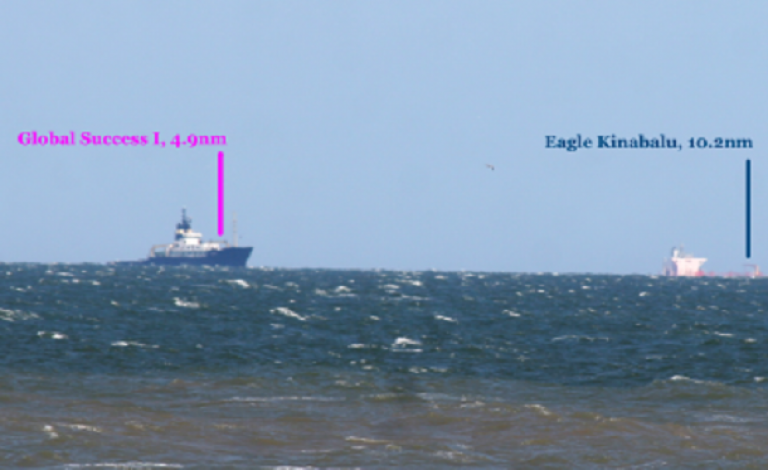Podcast: Is the Earth flat, or a circle?
Well, first things first a circle is a two-dimensional shape, so a circle is definitely flat. Listen to the mini-podcast below to hear more from Mat Disney.

25 October 2023
Transcript
ROBERTA LIVINGSTON: Hello and welcome to Ask the Expert where you ask the questions and UCL's finest experts answer. I'm your host, Roberta Livingston. I'm a schools engagement assistant at UCL East and on today's episode, you'll be hearing from Mat Disney, Professor of Remote Sensing in the Geography department at UCL. He is responding to the question is the Earth flat or a circle? Let's hear what he has to say…
MAT DISNEY: OK, alright. So question is, is the Earth flat or is it a circle? And obviously the first thing we can say is that it's neither of those things because it's a 3 dimensional object. So even if it were flat, which is not, then it wouldn't be a circle. It could take on any number of different shapes, but it's not flat so the I guess the the question is, is, is it a sphere or is it flat? And how do we if it is a sphere, how do we know it's a sphere? Now the simple answer to that is, you know, essentially we can go into space now and we can take a photo looking back and we can see that the Earth is, you know, close to a sphere. We can watch it rotating. We can see it passing underneath. So we've known ever since we've been able to put satellites in space and cameras in space that we can see the Earth as a sphere. I say it's not quite a sphere. It's a little bit squashed because it swells out at the because it's spinning quite fast, it swells out a bit at the equator, so it's a little bit of a kind of flat that I could imagine a a football and you're just pressing down a little bit on the top of it. So it's a bit wider at the equator than it is than it is at the poles, but let's say it's a sphere. OK, so we can tell straight away that we know it's it's not flat, it's not a circle, it's a sphere. We could see it rotating. There's all sorts of other reasons why that. we know it's a sphere one of those reasons that that we notice sphere is cause we can see things in the distance on a on a very flat horizon. For example on the surface of the ocean we can watch objects appear out of apparently out of nowhere as they come towards us. So we can see them essentially coming over the horizon now. You know, one of the questions would be, well, why can't I see the kind of curvature of the earth at the horizon? And the answer to that is you need to be able to see a very long way in either side to be able to see that because the earth is so large compared to us standing on. the surface. You'd need to be able to see a horizon stretching for 10s and 10s and 10s of kilometres from your left to your right to be able to see that effect. If you go up a bit higher and you have a perspective, you know if you're on a on a high mountain or in an aircraft, then you can start to see that curvature. Because you can see hundreds and hundreds of kilometres straight out spread out below you so we can start to see that. But when we're down on the Earth surface, it looks very, very flat because for kilometres in all direction, it is essentially flat and things get in the way. A hedge is not flat. It's gonna get in the way of us seeing the horizon. You know any little bumps and lumps so we need to find somewhere really, really flat. We need to be able to see 20, 30, kilometres in in away from us and 20, 30, 40, 50 kilometres either side of us. Then we can start to see that curvature and pretty much the only place you can see that realistically is on the surface of the ocean. And so that's why surface of the ocean, you can start to see things like ships in the far distance appearing up over the horizon. Or conversely, if they're going away from you disappearing over the horizon. So there's there's a kind of there are ways to see that, you know.
Image Credit: Quora.
How long have we known about that? That's one of the kind of cool things about this. Is that we've known about it for more than 2000 years in that the ancient Greeks noticed that. The shape of the Earth when it passes across the moon during a lunar eclipse was a crescent, which means that the Earth has to be curved. You know, it could still be a disc, but it has to be curved in some way. It's not just a rectangle, it's a square. Then about 240 BC there was a an ancient Greek kind of philosopher mathematician called Eratosthenes, who devised an experiment. He'd to to estimate the circumference, and he'd heard about a well in a place called Sirene, which is now in Aswan in Egypt, where if you go there at noon on the summer solstice, so the 21st of June. So the point at which the sun is closest to the the equator, the sun will be directly overhead. And so it shines straight down the well. So there's no shadow. So you can see. To outline of the sun down at the bottom of this well, he'd heard about this place. So he realised that if you could measure what the angle of the shadow was cast by a stick that he knew the height of at noon on the same day, somewhere much further north or south from that point. And he knew how far away that point was, either north or south of Sirene. Then he could calculate the curvature of the earth. So he went to a place called Alexandria, which is about 800 kilometres from Sirene. And he showed that the angle at Alexandria was about 7 degrees, or about 1/50th of a complete circle of 360 degrees. And. So using this kind of very clever but quite approximate method, he showed his circumference to the earth was about 39,000. And 39 1/2 thousand kilometres. That's what he estimated, essentially using a stick and camels to work out the distance from saying to Alexandria. We now know that the the circumference is at about just over 40,000 kilometres, so it was really, really close. So he was within a few percent of the real value going back to my point where I said that the earth isn't quite spherical. That throws into the reasons why there those differences occur. It's a slightly flattened sort of egg shape. Now we can measure those distances very accurately using satellites on, but I just think that's pretty incredible that like over 2000 years ago. You make an observation that ohh look, here's the sun shining down this well on the the point at which the, you know, noon solar noon. At that point, there's no shadow of the earth. The sun is shining right down there. If I had a stick somewhere else, and I know what the shadow length of that stick is on that same day, I could work out how curve the surface is using pretty simple geometry, so the ancient Greeks were, you know, they were the kind of founders of of our understanding of geometry and they were able to use that to predict what we know about the shape of the earth. So yeah, the earth is nearly as sphere not quite a sphere and we we've known that for over 2000 years.
ROBERTA LIVINGSTON: So there you have it. The Earth is not flat or a circle, but rather a sphere that's a bit squashed on the top. And that is the end of this episode. If you wish to submit your own question for an expert to answer, just type in, ask the expert UCL on your search engine and our website should be the first to pop up. Thank you. Till next time.
FURTHER READING
Read this article from NASA which includes an answer to 'how do we know the earth is round?'.
To find out more about Eratosthenes Measuring the Earth, read this article
 Close
Close


